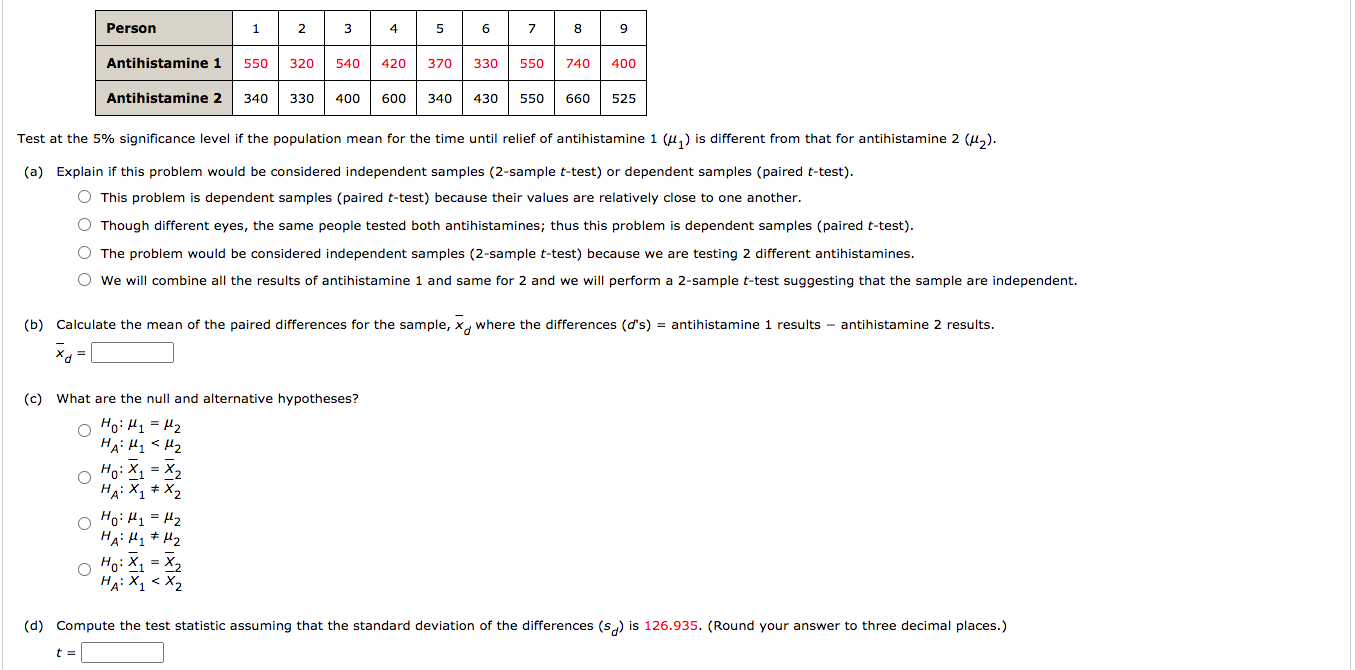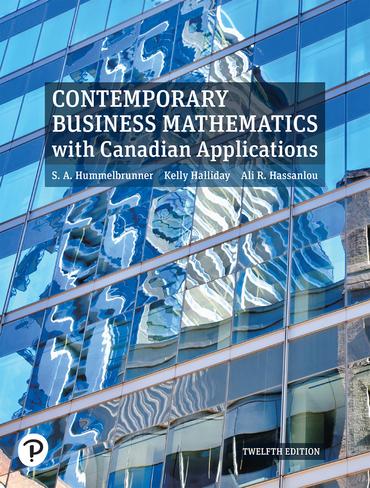One of the reasons why a person gets "red eye" is because of allergies. Assume an advocacy group tests two different antihistamine eye drops to see which would eliminate the symptoms quicker. The two antihistamines were tested on 9 different people where one antihistamine was put into one eye and the other medication in the other eye. The eye in which a particular antihistamine was put in was randomly selected. The time in seconds it took to get relief for each eye was recorded for each participant and is in the following table. Assume that the differences are approximately normal.
Person 1 5 8 9 Antihistamine 1 550 320 540 420 370 330 550 740 400 Antihistamine 2 340 330 400 600 340 430 550 660 525 Test at the 5% significance level if the population mean for the time until relief of antihistamine 1 (u,) is different from that for antihistamine 2 (#2). (a) Explain if this problem would be considered independent samples (2-sample t-test) or dependent samples (paired t-test). This problem is dependent samples (paired t-test) because their values are relatively close to one another. Though different eyes, the same people tested both antihistamines; thus this problem is dependent samples (paired t-test). The problem would be considered independent samples (2-sample t-test) because we are testing 2 different antihistamines. O We will combine all the results of antihistamine 1 and same for 2 and we will perform a 2-sample t-test suggesting that the sample are independent. (b) Calculate the mean of the paired differences for the sample, x. where the differences (d's) = antihistamine 1 results - antihistamine 2 results. X d = (c) What are the null and alternative hypotheses? O Ho: H1 = H2 HA: H1 - H2 Ho: X1 =X 2 OH:X1 * X, O Ho: H1 = H2 HA: H1 # H2 O Ho: X1 = X2 HA:X1 alphar do not reject the null hypothesis. There Is not strong evidence that a difference exists between the population mean time to relief for antihistamine 1 versus that of antihistamine 2. O Since the p-value -: alpha, do not reject the null hypothesis. There Is not strong evidence that a difference exists between the population mean time to relief for antihistamine 1 versus that of antihistamine 2. O Since the p-value :- alpha, reject the null hypothesis. There is strong evidenoe that difference exists between the population mean time to relief for antihistamine 1 versus that of antihistamine 2. 0 Since the p-value -: alpha, reject the null hypothesis. There is not strong evidence that a difference exists between the population mean time to relief for antihistamine 1 versus that of antihistamine 2. (h) Calculate a 95% condence interval for the difference between 1'11 and 112. (Round your answers to two decimal places.) (I:L:) (i) Interpret the confidence interval. We are 95% confident that the difference between /, and , is in this interval; therefore, based upon our samples we can tell a difference in the mean time until relief for the two antihistamines, /j > /2. The reason is that the confidence interval includes the value of zero. We are 95% confident that the difference between /, and , is in this interval; therefore, based upon our samples we cannot tell a difference in the mean time until relief for the two antihistamines. The reason is that the confidence interval includes the value of zero. We are 95% confident that the difference between /, and u, is in this interval; therefore, based upon our samples we can tell a difference in the mean time until relief for the two antihistamines, My /,. The reason is that the confidence interval includes a positive sign









